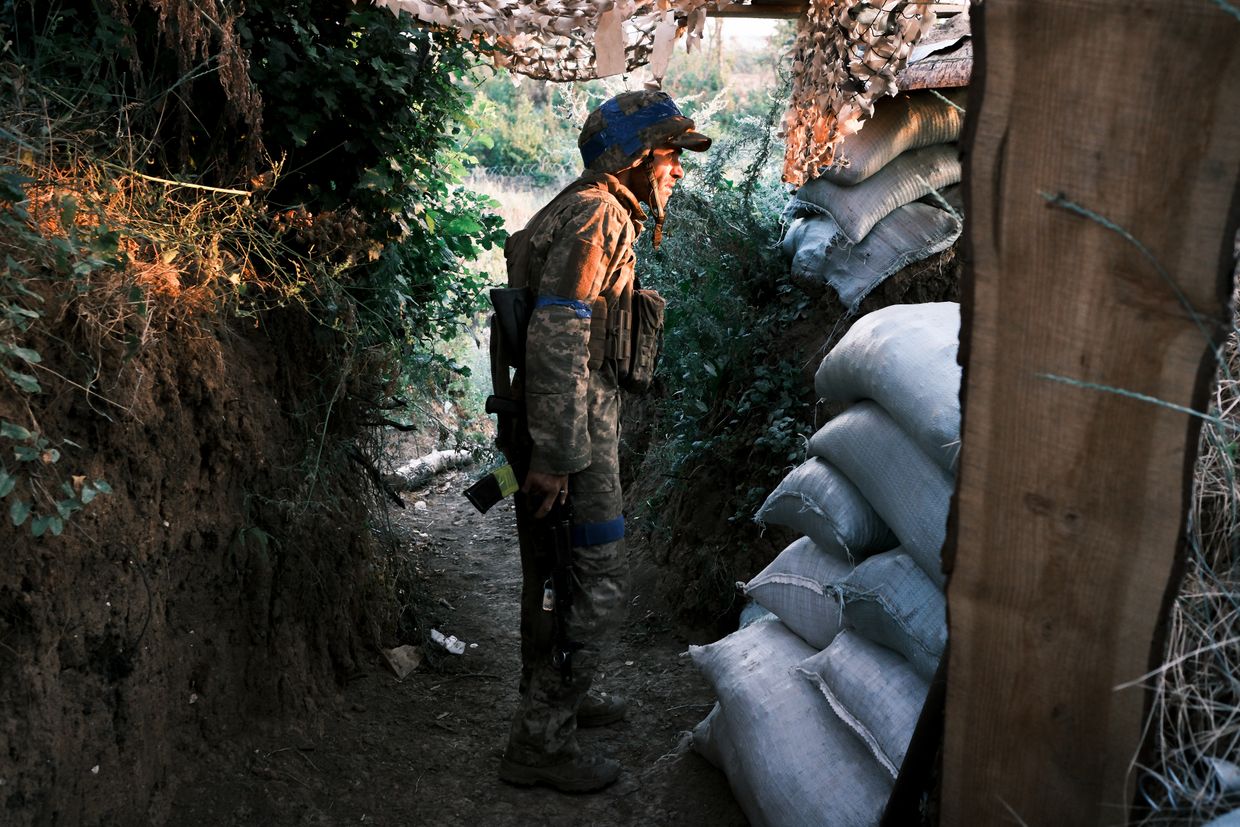Starstreak missiles in the hands of Ukraine's soldiers – here’s why they're so deadly

Ukraine's Armed Forces announced on July 23 that another batch of its soldiers were in the U.K., learning how to use possibly the best-named weapon on the battlefield – Starstreak.
"The Starstreak missile travels at more than three times the speed of sound and can hit a target multiple times due to its three, dart-like projectiles," Ukraine's General Staff said on Facebook.
"The training will help Ukrainian recruits defend their sovereign skies from Russia’s illegal aerial advances."
Starstreak isn't a new addition to the battlefield in Ukraine – it was actually among some of the first weapons supplied to Kyiv by the U.K. in order to deny Russia air superiority.
British troops were deployed to a secret location in Eastern Europe to train the Ukrainian armed forces in their use as far back as March 2022.
The U.K.'s Colonel Graham Taylor said at the time that Starstreak was "catastrophic" and "potent."
In April 2022, one was reportedly used by Ukrainian forces to down a Russian Mi-28 helicopter.
Video of the incident shows the aircraft flying low one second before a successful hit from a missile splits it in two.
The Times is reporting that this shootdown of a Russian Mi-28 was by a British Starstreak SAM pic.twitter.com/zsQb1DkQ74
— OSINTtechnical (@Osinttechnical) April 2, 2022
How does the Starstreak missile work?
Starstreak is a man-portable, air-defense system (MANPAD), a shoulder-fired, fire-and-forget weapon ideal for ambushing enemy aircraft from short range (up to 7 kilometers) and then making a quick exit.
It's manufactured by Thales Air Defence, a company based in Belfast, Northern Ireland. According to the U.S. Naval Institute, each missile costs $107,000.
Other similar systems used by Ukraine's armed forces include the U.S.-made Stinger, the Swedish-made RBS 70, and the Soviet-era Igla.
But what makes the Starstreak unique is the StarStreak Short Range Air Defense (SHORAD) High Velocity Missile.
The "missile" is actually three tungsten darts attached to a rocket motor which, when launched, are accelerated to more than Mach 3.0 (3,700 kph), making it the fastest weapon of its type in the world.

The Starstreak also has a clever laser-guidance system to ensure these exceptionally fast-moving projectiles hit their target.
Regular laser-guidance systems "paint" a target with a single laser beam. The projectile then follows the reflected laser energy, a set-up which requires the target to be painted constantly.
This can work very well for ground-based targets such as buildings or relatively slow-moving vehicles like tanks, but with aircraft traveling at high speed it's trickier.
The Starstreak system gets around this by utilizing two modulating lasers to create a matrix which keeps the projectiles on target.
Traveling at Mach 3.0, the three tungsten darts have more than enough kinetic energy alone to do serious damage to an aircraft, but for good measure, they also have an explosive charge on a delayed fuse designed to detonate when inside the target.

All of this is bad news for a Russian pilot caught in the crosshairs of a Starstreak.
The speed alone means there is practically no time to react and perform evasive measures, and the projectile itself is, according to the manufacturer, "almost totally resistant to countermeasures."
In perhaps understated language, Thales adds all this has a "huge impact on the human consciousness of pilots and a highly disruptive effect on mission planning and execution."
The Starstreak also comes in a few optional configurations – as well as the shoulder-fired MANPAD version, multiple launch tubes can be attached to various vehicles to maximize firepower.
Thanks again to the U.K., Ukraine has one version mounted to a Stormer armored vehicle, each one capable of carrying 17 Starstreak missiles.
💥 Meet the Stormer armed with Starstreak missiles and part of the 200 armoured vehicles the UK has donated to Ukraine.
— Ministry of Defence 🇬🇧 (@DefenceHQ) January 11, 2023
🤝 Our commitment to Ukraine remains steadfast, and we will match or exceed last year’s military support in 2023.
🇺🇦 #StandWithUkraine 🇺🇦 pic.twitter.com/fth5X4qw88
Ukraine has had great success in recent months shooting down Russian fighter jets with MANPADS systems, though the exact models used are not known.
Ukraine's National Guard claimed on June 28 it had downed another Russian Su-25 fighter jet in embattled Donetsk Oblast.
In a post on Telegram, the unit said the aircraft was on a combat sortie when it was hit by a "well-aimed shot" from a MANPADS.
Video of Ukrainian soldiers with Stinger and Igla MANPADS watching Russian Su-25 aircraft beyond their range. https://t.co/i5WtPZgmY1 pic.twitter.com/GKd3HFSKQ1
— Rob Lee (@RALee85) July 4, 2022
It was the second Russian Su-25 jet that Ukraine had claimed shot down in June.
In the previous month, the claimed total was six – Ukraine claimed that it destroyed Su-25s on May 25, May 23, May 4, May 11, May 13, and May 18.
The General Staff said on July 22 that Russia has lost 362 planes since the launch of the full-scale invasion.
The Kyiv Independent could not independently verify these figures.












